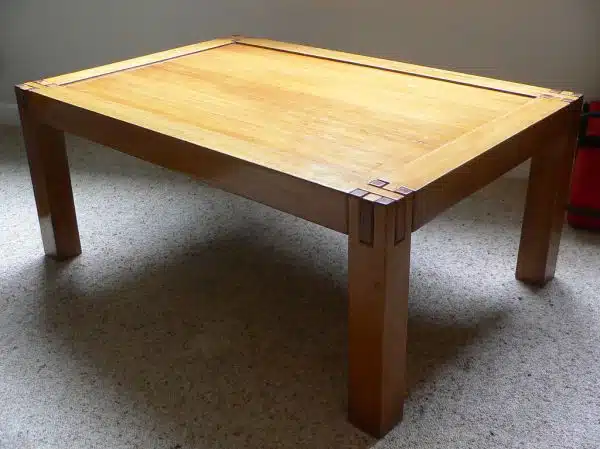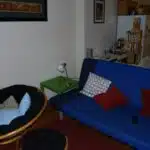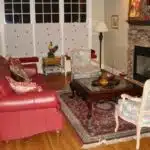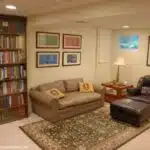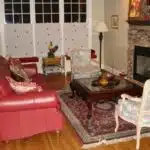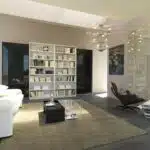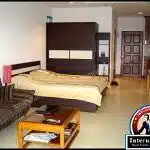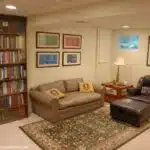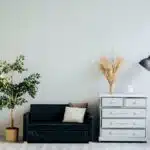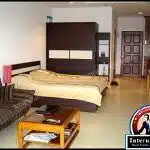The coffee table has become an essential piece of furniture in many living rooms, not only because it serves as a functional surface for placing drinks and snacks, but also because it is a key element in the overall design scheme. Styling a coffee table may seem like a simple task, but it requires careful consideration of the various elements that can be incorporated to create a cohesive and visually appealing display.
In this article, we will explore some tips and ideas for styling your coffee table. From selecting the right accessories to arranging them in an aesthetically pleasing way, we will provide you with practical advice on how to elevate your coffee table decor and create a warm and inviting atmosphere in your living space. Whether you prefer a minimalist or maximalist approach, there are endless possibilities when it comes to styling your coffee table. So sit back, relax, and let us guide you through the process of transforming your coffee table into a stylish statement piece that reflects your personal taste and enhances your home decor.
Choosing The Right Coffee Table
Coffee tables are an essential piece of furniture in any living room, as they offer both style and functionality. However, choosing the right coffee table can be a daunting task, especially if you have space limitations or don’t know what material options are available to you. Here, we will provide you with some tips on how to choose the right coffee table for your living room.
Firstly, consider your space limitations. If you have a small living room, opt for a smaller coffee table that won’t take up too much space. Conversely, if you have a larger living room, go for a bigger coffee table that will create balance and fill the empty space. Additionally, think about the height of your sofa and chairs when choosing a coffee table. Ideally, it should be at the same height or just slightly lower than your seating arrangement.
Secondly, think about the material options available to you. Coffee tables come in a variety of materials such as wood, glass, metal or even stone. Each material has its own unique characteristics that can add texture and depth to your living room. For instance, if you want to create warmth and coziness in your living room then consider wooden coffee tables. Or if you prefer a modern look then choose glass or metal coffee tables.
Assessing your living room space is crucial before selecting the perfect coffee table for your home decor needs. By keeping in mind these two factors – space limitations and material options – you’ll be able to narrow down your choices and find the ideal coffee table that fits both your personal style and practical requirements.
Assessing Your Living Room Space
- Measuring the living room space is an essential first step to determining the coffee table size, style, and placement.
- Coffee tables come in a variety of sizes, so it is important to measure the space and select a table that will fit comfortably in the room.
- Consider the size of the room, how far it is from the seating, and the size of the furniture in the room to determine the best size for the coffee table.
- When selecting a style for the coffee table, it is important to make sure it blends with the rest of the furniture in the room and reflects the desired aesthetic.
- Consider the existing style of the room when selecting a material, color, and shape for the coffee table.
- For example, if the room has a modern aesthetic, selecting a glass and metal table may be the best option.
Measure The Space
To achieve a stylish coffee table, it is essential to measure the space where it will be placed. This step ensures that the furniture layout is optimal, making the room functional and aesthetically pleasing. Utilizing a measuring tape allows for precise measurements, which are instrumental in deciding the appropriate size of the coffee table.
Before purchasing a coffee table, consider how much space is available in your living room. A large living room can accommodate a bigger table than a smaller one. The distance between the sofa and the coffee table should also be considered when selecting a size. Ideally, there should be enough space left for people to move around comfortably without feeling cramped.
Measuring the space correctly enables an individual to select coffee tables that fit perfectly into their living room’s design scheme. It helps prevent purchasing pieces that are too small or too big for the area, resulting in wasted resources and an unbalanced look. By doing so, one can create harmony and balance within their living room while enhancing its functionality without compromising on style.
Choose A Table Size
When it comes to decorating your living room, choosing the right coffee table size is crucial. It can be challenging to select the appropriate dimensions that match the room layout while enhancing its functionality and aesthetic appeal. However, selecting the right size requires careful consideration of various factors.
Firstly, consider the available space in your living room before purchasing a coffee table. A larger living room can accommodate a bigger table than a smaller one. Additionally, think about the distance between the sofa and coffee table. Ideally, there should be enough space left for people to move around comfortably without feeling cramped.
Secondly, think about how you plan to use your coffee table. If you frequently host guests or need a surface for board games or snacks, opt for a larger size. However, if you have limited space or prefer a minimalist design, choose a smaller option that complements your other furniture pieces.
In conclusion, selecting the appropriate coffee table size is integral in achieving an aesthetically pleasing living room while enhancing its functionality. By considering factors such as available space and intended usage, you can select a well-proportioned piece that fits perfectly into your home’s design scheme.
Decide On A Style
Assessing your living room space is a crucial step when decorating your home. It requires careful consideration of various factors, including the available space, intended usage, and design scheme. Another essential aspect to consider is the room’s style and theme that can impact its overall aesthetic appeal.
Choosing a theme for your living room can help create a cohesive and harmonious environment. Before selecting a style, consider the room’s function. If it’s mainly used for relaxation or entertainment, you may want to opt for a cozy and inviting style with comfortable seating options. On the other hand, if you use your living room as an office or workspace, consider incorporating functional furniture pieces that enhance productivity.
When deciding on a style, consider your personal preferences and tastes while keeping in mind the existing furniture pieces in the room. You can choose from various styles ranging from traditional to modern or mix different elements to create an eclectic look. Whatever style you choose, ensure that it complements the space’s overall aesthetic appeal without overpowering it. By choosing a suitable style for your living room, you can create a welcoming environment that reflects your personality and lifestyle.
Defining Your Style
Defining Your Style: Creating Mood and Finding Inspiration
One of the most exciting parts of decorating your home is choosing a style that reflects your personality and taste. However, with endless options available, it can be challenging to narrow down what you like and define your unique style. To create a memorable space, you must first establish the mood you want to evoke. Do you want a cozy and intimate atmosphere or a bright and airy feel? Defining your desired ambiance will help guide your decision-making process when selecting furniture, lighting, decor, and more.
To find inspiration for your coffee table styling, consider exploring various design styles. You may find elements from traditional or modern decor that resonate with you. Additionally, examining color schemes, textures, and patterns in magazines or online can help spark creativity. While browsing through inspirational images, take note of the elements that catch your eye. This step is crucial because it allows you to identify which design features align with your taste.
Creating an inviting space requires careful consideration of every detail – including the coffee table’s decor. Establishing a mood and finding inspiration are essential steps in defining your style’s direction. By taking time to explore different design styles and noting the elements that resonate with you, you’ll be better equipped to choose pieces that reflect your personality while creating a cohesive look in your home. In the next section, we will discuss how to establish a color palette for your coffee table styling without overwhelming the space.
Establishing A Color Palette
Building a cohesive aesthetic is key when styling your coffee table. One of the best ways to establish a cohesive aesthetic is by establishing a color palette. When choosing colors for your coffee table, it’s important to consider the overall color scheme of your room. Are you going for a monochromatic look or do you want to incorporate contrasting colors? Finding inspiration in unexpected places can also help with color palette selection. For example, take a look at artwork or textiles in your space and pull colors from there.
Once you have established a color palette, think about how you can incorporate those colors into your coffee table decor. This can be done through small accent pieces such as candles, books, or decorative objects. However, be careful not to go overboard with too many items in one color. It’s important to balance out the colors on your coffee table for a cohesive look.
In addition to selecting colors, consider incorporating texture and layers into your coffee table design. This will add depth and visual interest to your space. Think about adding items such as trays, coasters, or decorative bowls to create different levels on your table. The goal is to create an inviting and stylish space that reflects your personal style while still serving its practical purpose.
- Use metallic accents (such as gold or silver) to add shine and contrast
- Incorporate natural elements (such as wood or greenery) for an organic feel
- Mix patterns within the same color family for added interest
- Utilize muted tones (such as beige or gray) for a calming effect – Add statement pieces (such as a bold rug or unique art piece) to create a focal point in the room.
Incorporating Texture And Layers
Throws and blankets can be used to add texture to a coffee table. Accessories such as vases and books can be used to further style the coffee table. Incorporating different materials such as wood, glass, and metal can create an interesting contrast of textures. To add depth, multiple layers of the same material can be used to create a more eye-catching look. Soft blankets can add a cozy touch to a coffee table. A variety of accessories and decor can be used to enhance the overall look of a coffee table.
Adding Throws And Blankets
When it comes to styling a coffee table, adding throws and blankets can bring warmth and comfort to any living space. Cozy fabrics, such as wool or cashmere, can be draped over the edges of the table or folded neatly on top of a stack of books. Not only do they add texture and depth to the overall design, but they also serve a practical purpose for those chilly evenings spent lounging on the couch.
To incorporate colorful accents into your coffee table decor, consider using throws and blankets with bold patterns or vibrant hues. A pop of color can liven up even the most neutral of spaces and create visual interest in an otherwise plain design. Experiment with different textures and colors until you find a combination that suits your personal style and complements the existing decor in your room.
In conclusion, adding throws and blankets is an easy way to incorporate both texture and color into your coffee table styling. Whether you opt for cozy fabrics or bold hues, these accents are sure to make your space feel warm and inviting. So go ahead – curl up with a good book and enjoy all the comforts that this simple addition has to offer!
Adding Accessories And Decor
Incorporating texture and layers into your coffee table styling is a great way to add depth and interest to your living space. While throws and blankets are a popular choice for adding texture, there are other accessories and decor that can help achieve this look. Using contrast is one way to create visual interest, such as pairing a smooth vase with a rough-textured bowl. Additionally, incorporating vintage items can add character and history to your design.
When it comes to choosing accessories and decor for your coffee table, there are countless options available. Consider selecting pieces that complement the existing decor in your room while also adding something unique. For example, if you have a modern living space, try incorporating a vintage clock or antique bookends for an unexpected twist.
Another way to add layers to your coffee table display is by including objects of varying heights and shapes. This creates visual interest and draws the eye around the space. Additionally, don’t be afraid to play with scale – oversized objects can make a statement while smaller items can be grouped together for added impact. By experimenting with different elements, you can create a coffee table display that is both functional and visually appealing without feeling cluttered or overwhelming.
Incorporating Different Materials
Incorporating texture and layers into your coffee table styling is a great way to add depth and interest to your living space. To achieve this, one can explore the use of different materials in coffee table decor. Metal and glass combinations, for instance, can create a modern and edgy look while wood and stone pairings can give off a more rustic vibe. The key is to choose materials that complement each other and the overall style of your living room.
When incorporating metal and glass combinations into your coffee table display, it’s important to balance their sleekness with softer textures such as woven baskets or fluffy pillows. A metallic vase or decorative tray can also add shine and dimension to the ensemble. On the other hand, combining wood and stone elements can create a warm, earthy feel. A wooden tray paired with stone coasters or a marble bowl filled with natural accents like pinecones or moss can bring nature indoors.
Using different materials in coffee table styling allows you to experiment with various textures, colors, and finishes. You can mix-and-match items that have contrasting characteristics but still complement each other visually. Remember that every material has its own unique qualities, so don’t be afraid to combine them for an eclectic yet harmonious look on your coffee table display.
Utilizing Books And Magazines
Incorporating Texture and Layers in your coffee table design is just the beginning. While texture and layers add a lot of character, books and magazines can really make your coffee table pop! Stacking vs. spreading: book placement is an important consideration when styling your coffee table. Whether you choose to stack them or spread them out throughout the table depends on the size of your books, the amount of space available, and the overall aesthetic you are trying to achieve.
Mixing old and new: magazine selection is another key consideration when choosing what to place on your coffee table. A great way to achieve balance is by using both older vintage magazines with newer issues. This will not only create visual interest but also give a glimpse into your interests as well as reflect current trends.
To help you get started, refer to this helpful table for tips on how to incorporate books and magazines into your coffee table design:
| Type | Placement | Quantity |
|---|---|---|
| Hardcover Books | Stacked or standing up vertically | 2-4 |
| Coffee Table Books | Spread out horizontally | 1-3 |
| Magazines (Older) | Stacked or standing up vertically | 1-2 |
| Magazines (Newer) | Spread out horizontally | 1-3 |
| Oversized Art Books | Standing up vertically behind other items or laid flat with other items on top of it | 1 |
By following this handy guide, you’ll be able to expertly style your coffee table using books and magazines. Remember that it’s all about achieving balance between old and new, hardcover versus softcover, vertical versus horizontal placement. Stay tuned for the next section where we’ll discuss adding greenery and florals for that extra touch of elegance!
Adding Greenery And Florals
Adding greenery and florals to your coffee table can provide a refreshing touch to your living space. It is an easy way to add color, texture, and life to your interior design without going overboard with decor. Plus, it has been shown that incorporating plants into your decor can have numerous benefits for mental health, including reducing stress levels and boosting mood.
If you are looking for DIY options for adding greenery and florals to your coffee table, there are many cost-effective ways to achieve this look. You can create a small terrarium by filling a glass container with rocks, soil, and succulents or air plants. Alternatively, you can place fresh flowers in a vase or jar on the table as a centerpiece. Another option is to use faux plants if you do not want the maintenance of real ones.
Aside from the aesthetic appeal that greenery and florals bring to your coffee table, they also offer various health benefits. Studies have shown that being surrounded by nature or even just indoor plants can help reduce anxiety and stress levels while improving productivity. Allowing yourself time each day to tend to these plants or simply observe their growth can provide a sense of relaxation and calmness.
Incorporating greenery and florals into your coffee table decor not only adds visual interest but also provides numerous benefits for mental health. By choosing DIY options like creating a terrarium or using faux plants, you can achieve this look without breaking the bank or spending too much time on maintenance. In the next section, we will discuss how displaying art and sculptures can enhance your coffee table’s overall aesthetic appeal.
Displaying Art And Sculptures
Adding greenery and florals to your coffee table is an excellent way to add a pop of color and bring life to your space. However, it’s important not to rely solely on plants as the only decorative element of your coffee table. Mixing mediums can help create visual interest and balance in your design. For example, incorporating heirlooms or unique pieces collected over time can add character and tell a story about who you are.
To achieve a cohesive look on your coffee table, consider using a mix of materials such as wood, glass, metal, or ceramics. These materials can be incorporated through trays, decorative boxes, or even coasters. A tray is not only functional in keeping items organized but also adds an additional layer for styling opportunities. Consider arranging books, candles, or small sculptures within the tray to create different heights and textures.
When incorporating heirlooms or unique pieces into your design, try to select items that complement the overall aesthetic of your space. This will ensure that these pieces contribute positively rather than disrupt the flow of your design. Remember that mixing mediums doesn’t have to be complicated; it’s about finding balance between form and function while showcasing the things you love. In the next section, we’ll explore how using trays and decorative boxes can elevate the style of your coffee table even further.
Using Trays And Decorative Boxes
Tray vs Box: Which is Better for Styling a Coffee Table?
When it comes to styling your coffee table, trays and decorative boxes are an excellent addition. Both serve as functional and stylish pieces that can hold various items such as books, candles, and coasters. However, choosing between the two may be difficult.
Trays are perfect for those who want to showcase their favorite items without hiding them away. It provides an organized display while also making it easy to clear the surface when needed. On the other hand, decorative boxes offer a more subtle approach in styling your coffee table. It provides storage for items that you don’t necessarily want on display but still accessible when needed.
DIY Decorative Boxes: How to Make Your Own for Coffee Table Styling
If you’re looking to add a personal touch to your coffee table styling, then creating DIY decorative boxes is perfect for you. You can easily customize the size, color, and texture of these boxes according to your preference. All you need are some basic crafting materials such as cardboard or wooden boxes, paint or wallpaper, glue, and scissors.
Start by measuring the size of your coffee table and decide on the dimensions of your box accordingly. Cut out the cardboard or wooden pieces into the desired shape using scissors or a cutter knife. Then cover each piece in paint or wallpaper according to your desired style. Once dry, use glue to assemble each piece together into a box shape. Voila! You now have personalized decorative boxes that will add charm and personality to any coffee table.
Transition:
Now that we’ve covered using trays and decorative boxes in styling your coffee table let’s move on to another important aspect – candles and lighting!
Including Candles And Lighting
As we move on from using trays and decorative boxes, let’s delve into the realm of aromatherapy and lighting. Aromatherapy isn’t just about pleasing scents, it has a range of benefits for your mind and body. When selecting scents for your coffee table, consider the mood you want to create in the room. For example, lavender can help with relaxation while peppermint can energize you. You can use candles or diffusers to infuse your chosen scent into the air.
Creating ambiance is key when styling any space in your home, including your coffee table. Lighting is an important aspect of setting the right ambiance. Choose the right bulbs to enhance the mood that you want to set – warm tones for a cozy atmosphere or bright white light for a modern feel. You can also add dimmer switches to control the brightness of your lighting.
Now that we’ve covered using aromatherapy and selecting scents as well as creating ambiance by choosing the right bulbs, let’s move on to mixing and matching materials. By combining different textures like wood, metal, glass and ceramics, you can add depth and interest to your coffee table display. Remember not to overcrowd your table with too many materials – less is often more when it comes to design. With these tips in mind, you’ll be able to create a beautiful coffee table display that reflects your personal style while serving as a functional centerpiece in your living room.
Mixing And Matching Materials
One way to add visual interest to your coffee table is by mixing metals. Don’t be afraid to combine different metallic finishes, such as gold and silver or brass and copper. This technique adds depth and dimension to your space, while also creating a more eclectic feel. However, be sure to keep the proportions in mind – you don’t want one metal finish to overpower the others.
Another way to add texture and interest is through contrasting materials. For example, you can pair a sleek glass vase with a rough-hewn wooden tray or a shiny ceramic sculpture with a matte-finish stone coaster. These contrasts create visual tension that draws the eye, making your coffee table more dynamic.
When mixing and matching materials, it’s important to maintain a cohesive look throughout the space. Consider incorporating similar textures or colors in other areas of the room for a more unified design. Additionally, be mindful of scale – larger pieces should be balanced out by smaller accents.
As you continue styling your coffee table, consider highlighting unique finds and collectibles that reflect your personal style. These pieces will add personality to your space while also serving as conversation starters for guests. From vintage books to quirky figurines, these items will make your coffee table feel truly one-of-a-kind.
Highlighting Unique Finds And Collectibles
Displaying art pieces can be a great way to bring life and interest to a coffee table. Accenting with books, showcasing trinkets, and adding decorative objects can also give the coffee table a personalized touch. Placing flowers, candles, vases and sculptures can add texture and layers to the coffee table. Finishing touches such as accessorizing with plants, hanging wall art, placing figurines, mirrors, throws and lamps can bring the look of the coffee table together.
Display Art Pieces
Selecting and displaying art pieces on your coffee table is an excellent way to add a personal touch to your living space. A coffee table is not just a functional piece of furniture; it also serves as a decorative focal point in a room. By carefully selecting frames for your art pieces, you can create a cohesive look that ties together all the elements of your decor.
Mixing art styles is another way to highlight unique finds and collectibles in your home. The key to successfully mixing different styles of art is to find a common thread that ties them all together. This could be a color scheme, theme, or even the type of frame used. Be creative when selecting your pieces, and don’t be afraid to experiment with different combinations until you find the perfect mix.
When it comes to displaying art on your coffee table, be mindful of the size and scale of the pieces you choose. Small frames can get lost on larger tables, while oversized artwork can overwhelm smaller ones. Consider grouping several small pieces together in an arrangement or using one larger piece as a statement centerpiece. By following these tips and incorporating unique art pieces into your coffee table decor, you’ll create a stylish and personalized living space that reflects your individual taste and style.
Place Flowers
Highlighting unique finds and collectibles is a great way to add character to your living space. Aside from art pieces, flowers are also an excellent addition to coffee table decor. Flower arrangements can brighten up any room and create a warm and inviting atmosphere. When it comes to selecting the perfect vase for your flowers, consider its design and color scheme in relation to the rest of your decor.
Choosing the right flower arrangement is crucial in enhancing your coffee table decor. Opt for blooms that complement your overall color scheme and style. For instance, if you have a modern minimalist coffee table, choose flowers with clean lines and simple colors like white lilies or pink roses. If you have a rustic or bohemian-inspired coffee table, go for wildflowers or sunflowers in vibrant hues.
The vase selection is just as important as the flower arrangement itself. It should complement the color scheme and style of your coffee table decor while serving as a functional piece of decor as well. A clear glass vase is versatile and can go with any style, but you can also choose one with unique shapes or patterns to add an extra touch of character to your space. With these tips in mind, incorporating flower arrangements into your coffee table decor will surely elevate its overall look and feel.
Balancing Symmetry And Asymmetry
Highlighting unique finds and collectibles is a great way to add character and personality to your coffee table. However, it’s important to balance this with a sense of order and harmony. Symmetry and asymmetry are two ways to achieve this balance.
Symmetrical styling involves placing objects in an evenly spaced, identical pattern. This creates a sense of formality, elegance, and simplicity. For example, you can place matching candlesticks on either side of a vase filled with fresh flowers. On the other hand, asymmetrical styling involves placing objects in an uneven, unpredictable pattern. This creates a sense of playfulness, creativity, and spontaneity. For example, you can place a stack of books next to an interesting sculpture or a quirky figurine.
Achieving balance is key when styling your coffee table with symmetry or asymmetry. One way to do this is by using the rule of thirds: divide your coffee table into three equal sections and place objects in each section accordingly. Another way is by using the principle of repetition: repeat similar shapes or colors throughout your display to create unity and cohesiveness.
Experimenting with height and proportion is another way to add interest to your coffee table display. Play around with different heights by using books as pedestals for smaller objects or stacking objects on top of each other. Also, consider proportion by choosing objects that vary in size but still complement each other visually.
Symmetrical vs. Asymmetrical: Which is Right for Your Coffee Table? Achieving Balance: Tips for Styling a Coffee Table with Symmetry and Asymmetry are both important considerations when designing your coffee table display. By keeping these principles in mind and experimenting with different techniques, you can create a beautiful and functional centerpiece for your living space that reflects your personal style and taste.
Experimenting With Height And Proportion
As the famous proverb goes, “Variety is the spice of life,” and this holds true when it comes to styling your coffee table. Experimenting with height and proportion is one way to add visual interest to your space. Playing with scale can create a sense of drama and intrigue. One way to do this is by incorporating objects of varying heights on your coffee table. For example, placing a tall vase next to a short stack of books can create an eye-catching contrast.
Another way to experiment with height and proportion is by incorporating unusual objects into your coffee table display. This can add personality and a unique touch to your space. For instance, placing an interesting sculpture or vintage trinket on top of a stack of magazines can add depth and texture to your arrangement.
It’s important to note that while experimenting with height and proportion can be fun, it’s also important to maintain balance in your display. Too many tall or too many small items can make the arrangement feel cluttered or unbalanced. Remember to step back periodically and assess the overall look of your coffee table display before making any final adjustments.
Transitioning into personalizing your space, let’s explore how adding personal touches like family photos or favorite books can bring warmth and character into your living area.
Personalizing Your Space
Making your space feel like your own can be achieved through adding personal touches that reflect your personality and style. One of the most important aspects in making a space feel cozy is incorporating elements that make you feel at home. These elements can range from photographs of loved ones to decor items that hold sentimental value.
When it comes to adding personal touches to your coffee table, consider incorporating items that showcase your interests and hobbies. For example, if you are an avid reader, add a stack of books or a vintage bookend to your table. If you love plants, incorporate a small succulent or vase filled with fresh flowers. By doing so, you will create a space that not only looks beautiful but also reflects who you are.
Another way to personalize your coffee table is by incorporating unique pieces that spark conversation. Consider adding a statement piece such as an antique clock or an interesting sculpture. These pieces not only add visual interest but also invite guests to ask about their significance, creating a welcoming atmosphere in your home.
- Incorporate items that hold sentimental value
- Display items related to interests and hobbies
- Add unique pieces that spark conversation
By following these tips and adding personal touches to your coffee table, you can create a warm and inviting space that truly feels like home. Don’t be afraid to experiment with different decor items and styles until you find what works best for you. Remember that making a space cozy is all about creating an environment that makes you happy and comfortable.
Conclusion
When it comes to styling a coffee table, there are various factors that need to be taken into consideration. From choosing the right coffee table to assessing your living room space, defining your style, establishing a color palette, incorporating texture and layers, highlighting unique finds and collectibles, balancing symmetry and asymmetry, experimenting with height and proportion, and personalizing your space – every step plays an important role in creating a visually appealing coffee table.
According to a recent study by Houzz on interior design trends in 2021, 47% of homeowners are focusing on improving their living room decor. This indicates that people are investing more time and money into creating an aesthetically pleasing living space. Styling a coffee table can transform the look of your living room while also reflecting your personality and style.
Incorporating unique finds such as vintage books or small sculptures can add character to your coffee table. Balancing symmetry with asymmetry is also important for a visually pleasing look. Don’t forget to experiment with height and proportion – layering objects of different heights can add depth to the arrangement. Personalizing the space is also key – decorating with items that have sentimental value or reflect your hobbies can make your coffee table truly one-of-a-kind. By following these tips, you can create a beautiful coffee table that complements your living room decor while showcasing your personality and interests.
Image Credits
- “Josh’s coffee table” by mia.judkins (featured)

